Hanumān’s leap towards Laṅkā and the Memory of Flight Path of Swāti Nakṣatra
- In Religion
- 12:51 PM, Mar 04, 2022
- Rupa Bhaty
लतानाम् विविधाम् पुष्पम् पादपानाम् च सर्वशः।
अनुयास्यति माम् अद्य प्लवमानम् विहायसा ।।
भविष्यति हि मे पन्थाः स्वातेः पन्था इव अंबरे ।
Ramayana 4.67.19
“then my flight path will become like that of Star Swati and its constellate stars twinkling in the sky…” says Hanuman as he stood on the Indian shores facing a humongous task of reaching Lanka ahead of him.
Why is Hanuman comparing his journey with that of Swathi nakshatra? What is so special about Swati nakshatra?
This study aims at showing that Hanumān’s knowledge from the memories of deep antiquity is one of the greatest evidence of observing proper motion of the Stars by our ancients…
Swati is one of the 27 ecliptic nakshatras used in Indian luni-solar calendar. In the sky chart Swāti is assigned to western Arcturus which is the fourth brightest star in the sky, and the brightest in the constellation Boötes. It is an orange giant.
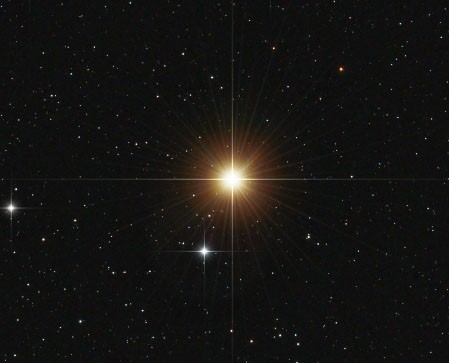
Interestingly, Swati was not the first/only name assigned to Arcturus by Indian astronomers. We find Taittreya Brahmana calling Swati as Nistya.
वायुर्नक्षत्रमभ्येति निष्ट्याम् । तिग्मशृङ्गो वृषभो रोरुवाणः । समीरयन्भुवना मातरिश्वा । अप द्वेषाँ सि नुदतामरातीः
3.1.1.10: “Vayu approaches Nistya nakshatra. A roaring sharp-horned bull. May Matarisvan rousing creatures drive away enemies dispelling hostilities”
Nistya in Sanskrit means: External, foreign, strange.
This appears to be a strange name since Swati is already quite away from the ecliptic and we do not find it behaving strange as of now if the name is believed to be just 3000–4000 year old (timeframe usually assigned by the Western Indologists for Indian Astronomy).
Additionally, it is very curious as if the ancients were observing its high movement and thus assigned Swāti to Vayu-Wind god. We in fact also see the Maitriyani Upanishad linking stars with wind when it says stars are held by ropes of wind.
अथ किमेतैर्वान्यानां शोषणं महार्णवानां शिखरिणां प्रपतनं ध्रुवस्य प्रचलनं स्थानं वा तरूणां निमज्जनं पृथिव्याः स्थानादपसरणं सुराणं
1.7: “And what of these? There is the drying up of other great oceans, the falling of mountains, the moving of the pole-star, the cutting of the wind-ropes (that hold the stars), the submergence of the earth, and the departure of the gods (suras) from their place”
Luckily, the First Prapāṭhaka of the Third Kāṇḍa of the Taittirīya-Brāhmaṇa has some interesting facts in it. It does give us a hint of the character of star Swāti when it says — “To the faculty of moving at will, to conquest-swaha!”.
वायुर्वा अकामयत । कामचारमेषु लोकेष्वभिजयेयमिति । स एतद्वायवे निष्ट्यायै गृष्ट्यै दुग्धं पयो निरवपत् । ततो वै स कामचारमेषु लोकेष्व-भ्यजयत् । कामचारꣳ ह वा एषु लोकेष्वभिजयति । य एतेन हविषा यजते । य उ चैनदेवं वेद । सोऽत्र जुहोति । वायवे स्वाहा निष्ट्यायै स्वाहा । कामचाराय स्वाहाभिजित्यै स्वाहेति ।।3.1.4.13।।
“Vayu desired: “May I acquire the faculty of moving at will in these worlds.” He offered that well known oblation of the milk of a cow which has had only one calf, to Vayu and to Nistya. Consequently, he acquired the faculty of moving at will in these worlds. He indeed acquires the faculty of moving at will in these worlds, he who offers that oblation and who thus knows it. So, on this occasion, he offers the oblations, saying, “To Vayu, svaha! To Nistya, svaha! To the faculty of moving at will, svaha! To Conquest, svaha!”
What can be the link between Swati and “moving at will”?
When went deeper into the contemporary sciences we find something very interesting about Arcturus’s own intrinsic or proper motion.
Proper motion of a star:
Proper motion is the apparent angular motion of a star across the sky with respect to more distant stars. Normally, the typical proper motion of a star is ~0.1 arcsec/year1.
However, Arcturus has a proper motion of ~2 arcsec/year or 2.3″ to the southwest (PA 209°) each year.
Arcturus or our Swathi stands out among its fellow stars because it is moving rapidly in relation to the Sun (122 km/s or 270,000 mph) as well as perpendicular to the galactic plane in which the Sun revolves2.
A sample of Swati’s movement in the span of just a lifetime (50 years) is shown below;
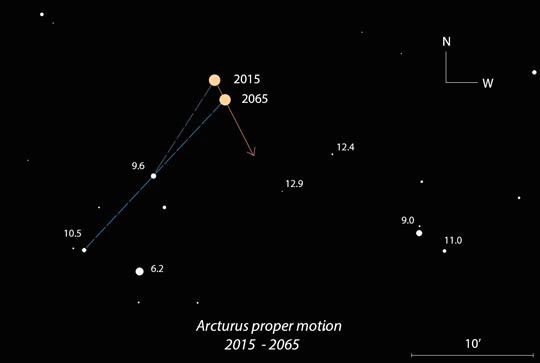
This might actually indicate as to why devatā of Swāti nakṣatra is Vayu and is also called as Nistya.
This star with high proper motion (for an ecliptic star) would have obviously behaved strange if observed for thousands of years and it is still foreign to (or just approaching) the ecliptic.
The best way to visualize this is to compare the pictures of the past when she was a pole star and left the place towards ecliptic, with today’s present sky chart.
1) At one point of time Swati was a pole star (58,000 BCE) and was located at the left side of Saptaṛśis.
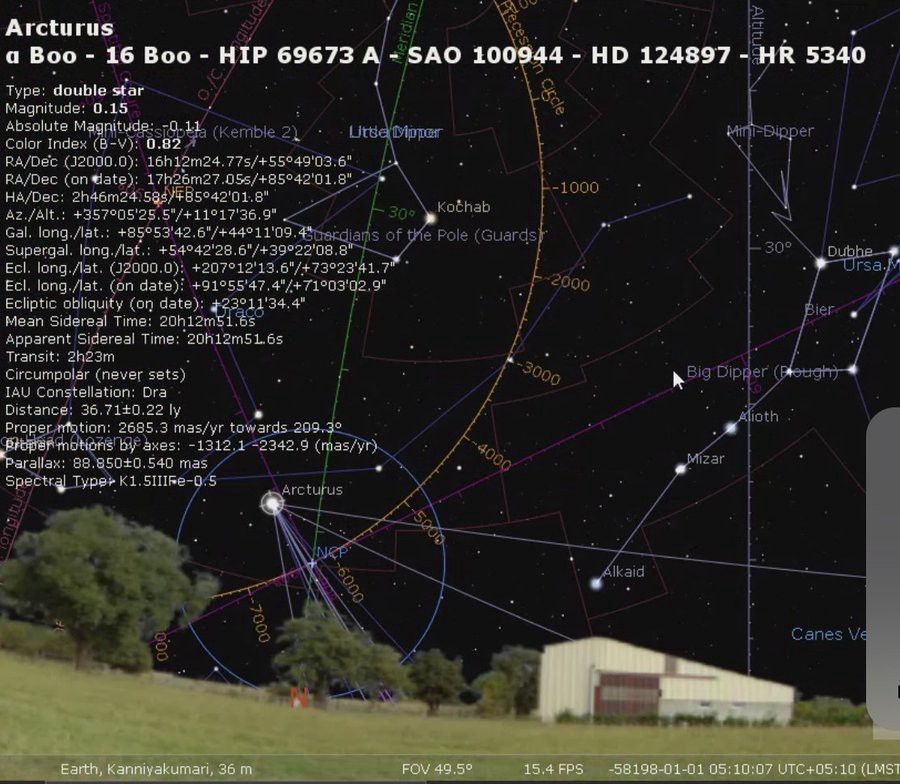
2) Whereas, in today’s time she has moved to the right side of Saptaṛśis.
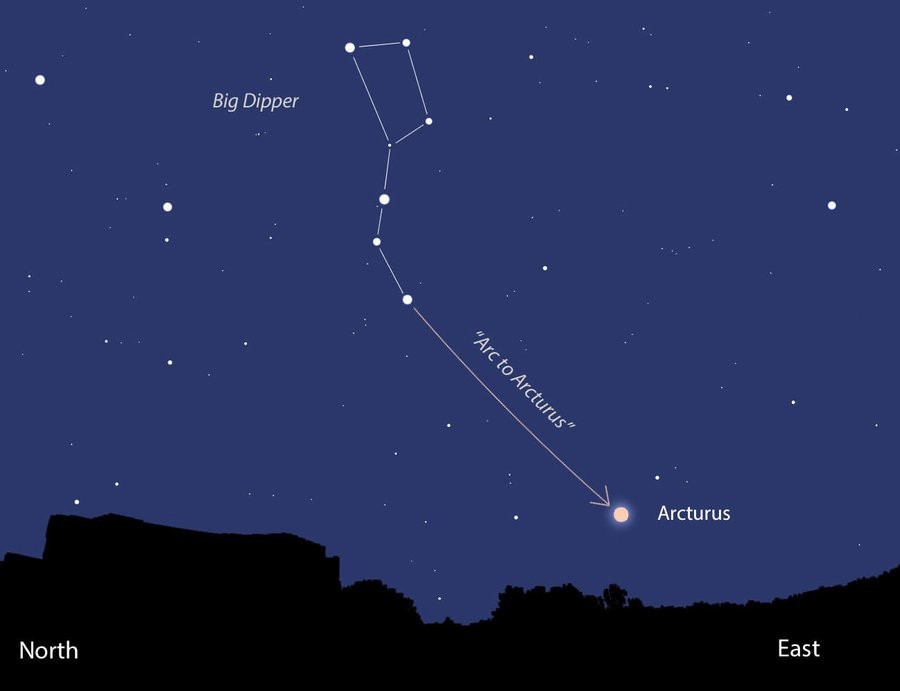
In other words, at some point of time after 58,000 BCE; Swati nakshatra left the pole position and embarked on its journey towards the ecliptic!
How did Hanumān know that Swāti nakṣatra had a flight path? The answer to it is only one, and that is, she had been continuously observed from deep antiquity and the knowledge of such events were recorded invariably.
With all this evidence, we can now understand, why when Hanumān was about to leap towards Laṅkā he uses the metaphor of Swāti nakṣatra’s great leap/flight path.
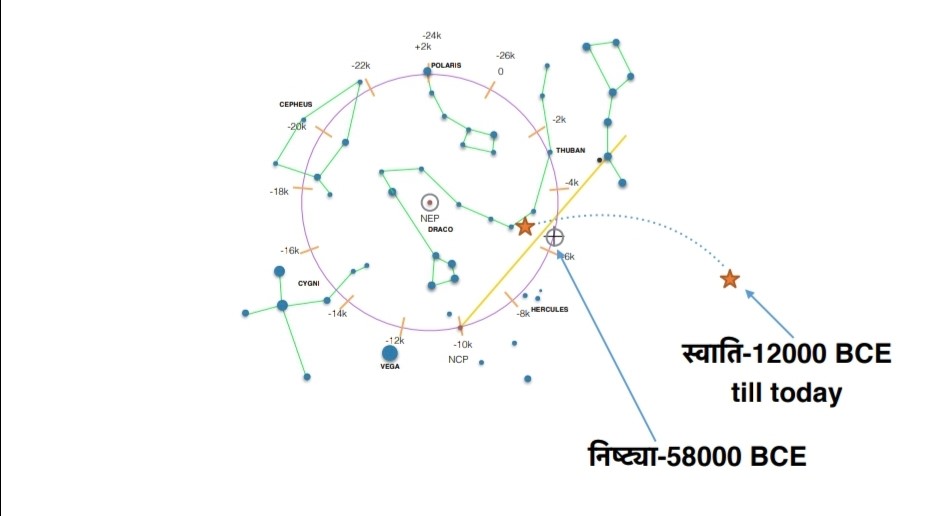
Structuring the complete study in the “5 step Logic of Scientific method” – Explanation, Prediction, Testing form is presented below;
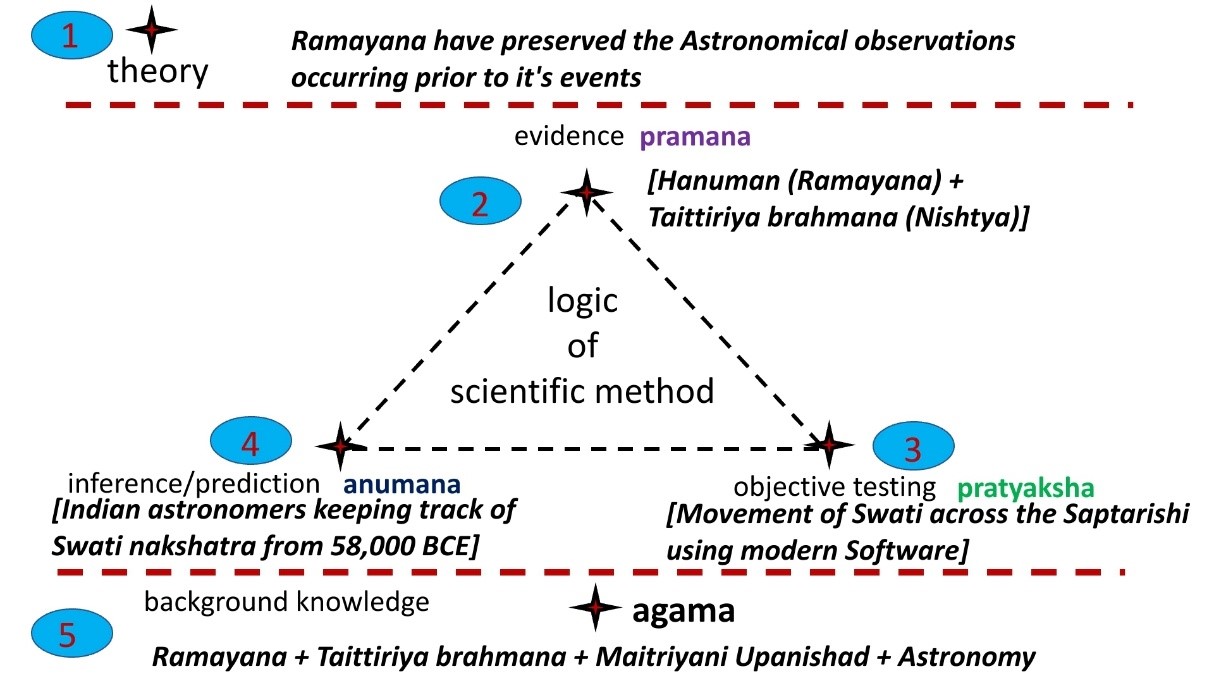 |
References:
1 – Astronomy Ohio
2 – Sky & telescope
Image Credits:
Arcturus images – Sky&telescope: Essential guide to Astronomy
Cover image: Quora



























Comments